Today’s Current Affairs: 22nd Jan 2024 for UPSC IAS exams, State PSC exams, SSC CGL, State SSC, RRB, Railways, Banking Exam & IBPS, etc
Table of Contents
Nuclear Battery:
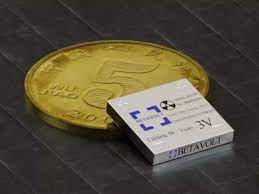
Chinese startup Betavolt has developed a “nuclear battery” that can produce power for 50 years without charge.
- The battery, which is smaller than a coin, contains 63 nuclear isotopes and converts radioisotope energy into electrical energy.
- Betavolt claims it is the world’s first battery to achieve miniaturization of atomic energy production, challenging traditional notions of nuclear technology.
- Such batteries use energy from the decay of a radioactive isotope (Like nickel-63) to generate electricity. Unlike nuclear reactors, they do not rely upon nuclear fission for power generation.
- The company plans to produce batteries with 1 watt of power by 2025 and sees applications in aerospace, AI equipment, medical devices, microprocessors, sensors, drones, and micro-robots.
- The nuclear battery is fire-resistant, jerk-proof, and operational in temperatures from -60°C to 120°C.
Lamprey Fish : Two New Species

A recent study has uncovered two potential new species of lamprey fish in California waters.
- Lampreys are boneless, jawless fish with eel-like bodies that date back over 350 million years.
- They belong to a relic (primitive) group of jawless fish called Agnathans.
- They live in coastal and fresh waters and are found in temperate regions around the world, except Africa.
- Unlike “bony” fish like trout, cod, and herring, lampreys lack scales, fins, and gill covers.
- They breathe through a distinctive row of seven pairs of tiny gill openings located behind their mouths and eyes.
- Like sharks, their skeletons are made of cartilage.
- Lamprey’s jawless mouth is a circular, fleshy sucker filled with hundreds of small teeth and a rasping tongue.
- They are migratory fish, moving between fresh and saltwater to complete their lifecycle.
- They spend most of their lives at sea and only move into freshwater to spawn and for their juvenile life stage.
- They attach themselves to large animals like fish and whales using their sucker mouth. They feed as parasites, rasping into the host’s flesh with their sharp teeth and sucking out blood.
Guidelines For Coaching Centre:
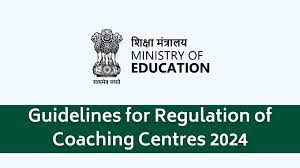
The Ministry of Education has sent to states/UTs for consideration guidelines for coaching centres.
Key features of the Guidelines:
- Registration of Coaching Center Prior registration is required for maintaining a coaching centre. Existing centres must apply within three months.
- For States States/UTs were urged to Develop an Online Registration Portal for Coaching Centers
- For Coaching Centers Fee and Infrastructure Centres can charge fair fees, provide receipts, mention courses, and duration, and maintain basic infrastructure.
- Fee Refund Clause Refund the remaining fee within 10 days if a student leaves the course midway after paying the entire fee.
- Allocate a minimum of one square meter per student, comply with fire safety, and limit study hours.
- Class schedules should not overlap with regular school hours.
- Mandatory weekly offs for both students and tutors.
- Maintain sizes for a healthy teacher-student ratio.
- No coaching centre shall engage tutors having less qualification than graduation.
- No coaching centre shall make misleading promises or guarantee of rank or good marks to parents/students for enrolling them in the coaching centre
- Penalty for Violations First offence: ₹25,000; Second Offence: ₹1 lakh; Repeated Breaches: Revocation of Registration.
- Establish committees for complaint redressal, avoid undue pressure, and provide assistance to students in distress.
- Remedial classes, spaced-out curriculum, weekly offs, no tests/exams after weekly offs, festival leaves, limited daily class hours, appropriate timing, co-curricular activities, counselling sessions, and non-publication of assessment results.
Operation Sarvashakti : Indian Army

The Indian Army launched Operation Sarvashakti, a strategic initiative aimed at eliminating terrorists responsible for a series of ambushes on Indian troops in the Rajouri and Poonch regions of Jammu and Kashmir.
- The Chinar Corps in Srinagar and the White Knight Corps in Nagrota will conduct simultaneous operations as part of this initiative.
- The operation is on the lines of Operation Sarpvinash of 2003, which was launched against terrorists south of the Pir Panjal range, which lasted three months and resulted in the elimination of nearly 100 terrorists.
- The aim of the operation is to put an end to the terrorist activities backed by Pakistan in the state of Jammu and Kashmir.
- The terrorist groups from Pakistan have been attempting hard to resurge terrorism in the sector of Rajouri Poonch.
18th Annual Status Of Education Report (ASER) 2023:
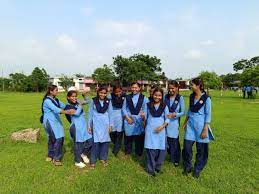
The 18th Annual Status of Education Report (ASER) 2023 titled ‘Beyond Basics’ was released by NGO Pratham, discussing the activities students are engaged in, their basic and applied reading and maths abilities and digital awareness and skills.
Highlights of the ASER 2023:
- Overall, 86.8% of 14-18-year-olds are enrolled in an educational institution.
- However, there are notable differences visible by age, with 3.9% of 14-year-olds and 32.6% of 18-year-olds not enrolled.
- Most students in the 14-18 age group are enrolled in the Arts/Humanities streams, with more than half (55.7%) in Class XI or higher studying in this stream.
- There are gender differences, with fewer females (28.1%) enrolled in the Science, Technology, Engineering, and Mathematics (STEM) stream compared to males (36.3%).
- Only 5.6% are taking vocational training or related courses. Vocational training is more prevalent among college-level students (16.2%).
- Most youth are taking short duration courses of six months or less.
- About 25% of the youth cannot read a Class II level text fluently in their regional language.
- While females (76%) outperform males (70.9%) in reading a Standard II level text in their regional language, males excel in arithmetic and English reading.
- Only 57.3% can read sentences in English, and of those, almost three-quarters understand their meanings.
- Close to 90% of all youth have a smartphone in the household, and 43.7% of males have their own smartphone compared to 19.8% of females.
- Males generally outperform females in digital tasks, and performance on digital tasks improves with education level and basic reading proficiency.
- Over 50% of students in the 14-18 age group face difficulties with elementary division problems, and around 45% struggle with tasks such as calculating the number of hours a child slept based on bedtime and wake-up time.
- Inadequate foundational numeracy skills hinder youth proficiency in everyday calculations, including budget management, applying discounts, and calculating interest rates or loan repayments.
- Almost 90% of Indian youth have access to a smartphone in their household and know how to use it. This indicates widespread digital connectivity among this demographic.
- There is a significant gender disparity in digital literacy. Girls are reported to be less likely to know how to use a smartphone or computer compared to boys.
- Males (43.7%) were more than twice as likely as girls (19.8%) to own their own smartphone.
- There is a notable gender gap in smartphone ownership, with males being more than twice as likely as females to own their own smartphone.
- Boys outperformed girls across various digital tasks.
- Boys are more familiar with online safety settings compared to girls. This suggests a need for targeted efforts to educate and empower girls in online safety practices.
- About two-thirds used smartphones for educational purposes, such as watching online videos related to studies, solving doubts, or exchanging notes.
- While the survey aimed to assess digital skills using smartphones, not all youth could bring a smartphone with good connectivity.
- Boys were more likely to bring smartphones for the assessment compared to girls, indicating discrepancies in access.
- A quarter of non-enrolled youth reported engaging in educational activities on their smartphones, emphasizing the role of digital devices in supporting learning outside formal educational settings.
Khelo India Youth Games- 2023:
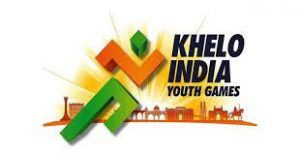
Prime Minister inaugurated the Khelo India Youth Games and expressed the government’s commitment to hosting the 2029 Youth Olympics and the 2036 Olympic Games in the country.
- Tamil Nadu is hosting the sixth edition of the Khelo India Youth Games.
- This is the first time that Khelo India Youth Games are being held in South India.
- The Games will be played across four cities of Tamil Nadu, namely Chennai, Madurai, Trichy and Coimbatore from 19th to 31st January 2024.
- This edition of Khelo India Youth Games will see participation from over 5600 athletes with over 275 competitive events across 26 sports disciplines and 1 demo sport.
- Silambam, a traditional sport of Tamil Nadu, is being introduced as a demo sport for the first time in the history of Khelo India Youth Games and the sport of Squash shall be organised for the first time in this edition of the Games.
- The Mascot: ‘Veera Mangai’. Rani Velu Nachiyar, fondly known as Veera Mangai, was an Indian queen who waged a war against British colonial rule.
- The logo: The figure of poet Thiruvalluvar.
Pradhan Mantri Rashtriya Bal Puraskar 2024:
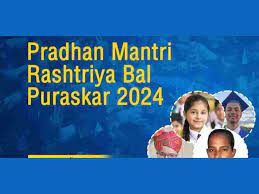
The President of India to confer Pradhan Mantri Rashtriya Bal Puraskar 2024 to 19 children for their exceptional achievement in six categories.
- The awards are given to children in the age group 5 – 18 years for their excellence in seven categories for Bravery, Art & Culture, Environment, Innovation, Science & Technology, Social Service and Sports.
- Objective is to encourage children who had shown exceptional achievement in any field including academics, arts, culture and sports etc.
- The two categories covered under these Awards are as follows:
- Bal Shakti Puraskar (earlier called National Child Award) –
- These awards are to be given as recognition to children with exceptional abilities and outstanding achievement in the fields of innovation, scholastic achievements, sports, arts & culture, social service and bravery which deserves recognition.
- Each awardee will be given a medal, a cash prize of Rs. 1,00,000/-, book vouchers worth Rs. 10,000/-, a certificate and citation.
- Bal Kalyan Puraskar (earlier called National Child Welfare Award)
- Individual – These Awards are given as recognition to individuals who have made an outstanding contribution towards service for children in the field of Child Development, Child Protection and Child Welfare for not less than 7 years and have a positive impact on the lives of children.
- The number of awards would be three. The award consists of a cash prize of Rs. 1, 00,000/ – (one lakh), a citation and a certificate to each awardee.
- Institution – These awards are given to institutions who have done exceptional work for the cause of children in any field of child welfare. The number of awards would be three.
- The award for institution consists of a prize of Rs. 5,00,000/ – each and a citation and a certificate.
- Bal Shakti Puraskar (earlier called National Child Award) –
19th Non-Aligned Movement (NAM) Summit:
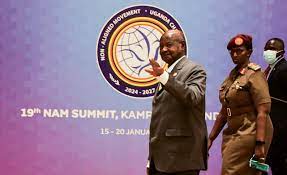
The 19th Non-Aligned Movement (NAM) summit was held in Kampala, the capital of Uganda on 19 and 20 January.
- NAM Summit was held under Uganda’s leadership in Kampala. Uganda has taken over as chair from Azerbaijan, to run until 2027.
- Theme: ‘Deepening Cooperation for Shared Global Affluence.’
Non-Aligned Movement:
- The Non-Aligned Movement (NAM) is an alliance of developing nations that refuses to identify with any major superpower.
- It was established in 1961 at the height of the Cold War. Whereas it started with the Bandung Conference held in Indonesia in 1955.
- Current members: 120 countries: 53 from Africa, 39 from Asia, 26 from Latin America and the Caribbean and two from Europe.
- It also includes the non-UN member state of Palestine, 17 other observer countries, and 10 observer organizations.
- India is one of the founding members.
SLIM : Japan’s Moon Mission
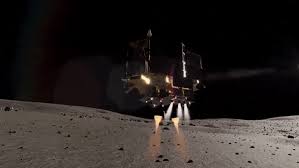
Japan recently landed a spacecraft called SLIM (Smart Lander for Investigating Moon) on the lunar surface, becoming the 5th country after the Soviet Union, the US, China and India to achieve a soft landing on the moon.
- SLIM was launched by the Japan Aerospace Exploration Agency (JAXA) in September 2023 aboard the H-IIA rocket from the Tanegashima spaceport.
- It aims to demonstrate precision landing within 100 metres through new technologies.
- It also carried two mini robotic rovers developed by Sony and Tomy for reconnaissance.
- The mission aims to revitalise Japan’s space program which suffered setbacks like the failure of the flagship H3 rocket in March 2023.
- The mission aims to observe X-rays coming from deep space and to identify their wavelengths with unprecedented precision.
- It will use state-of-the-art spectroscopy to measure changes in the brightness of celestial objects at different wavelengths.
- It detects X-rays with energies ranging from 400 to 12,000 electron volts.
- This range will provide astrophysicists with new information about some of the universe’s hottest regions, largest structures, and objects with the strongest gravity.
Gangetic Dolphin : Rescued
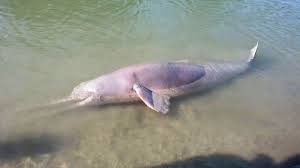
A Gangetic dolphin was rescued in Odisha. It may be an indicator of more freshwater dolphins in river.
- Gangetic dolphin Common Name: Susu
- Scientific Name: Platanista gangetica gangetica.
- Habitat: Ganges river dolphins once lived in the Ganges-Brahmaputra-Meghna and Karnaphuli-Sangu river systems of Nepal, India, and Bangladesh.
- The Ganges river dolphin can only live in freshwater.
- It is essentially blind and they hunt by emitting ultrasonic sounds.
- It has a sturdy, yet flexible, body with large flippers and a low triangular dorsal fin.
- Conservation status:
- IUCN: Endangered
- Wildlife (Protection) Act: Schedule-I
- CITES: Appendix I
Atal Bhujal Yojna : Meeting For Review

The meeting for review of progress of Atal Bhujal Yojna was held at Khajuraho, Madhya Pradesh.
- Atal Bhujal Yojna is a central sector scheme which was launched in 2019.
- Duration: Period of 5 years (2020-21 to 2024-25), Increased by 2 years in May, 2023
- The major objective of the Scheme is to improve the management of groundwater resources in select water stressed areas in identified states.
- The scheme is being taken up in 8220 water stressed Gram Panchayats of seven states: Haryana, Gujarat, Karnataka, Madhya Pradesh, Maharashtra, Rajasthan and Uttar Pradesh.
- Implemented Ministry: Ministry of Jal Shakti.
- The key results areas are:
- Strengthened institutional framework and effective ground water data monitoring and disclosure.
- Improved planning and implementation of groundwater management interventions.
Global Alliance For Global Good Gender Equity And Equality:
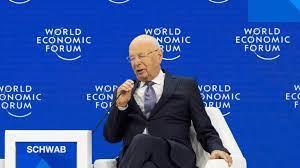
India successfully established a “Global Alliance for Global Good – Gender Equity and Equality” to promote women’s empowerment and gender equality
- Global Alliance for Global Good – Gender Equity and Equality is a new alliance for global good, gender equity, and equality established by India on the sidelines of the 54th annual World Economic Forum (WEF) meeting in Davos.
- The alliance will bring together worldwide best practices, knowledge sharing, and investment opportunities in women’s education, health, and enterprise.
- This initiative marks a significant stride toward achieving multiple Sustainable Development Goals (SDGs), including SDG 3 (Good Health and Well-Being), 4 (Quality Education), 5 (Gender Equality and Empowerment), 17 (Global Partnership for Development) and more.
- It has garnered support from industry leaders such as MasterCard, Uber, Tata, TVS, Bayer, Godrej, the Serum Institute of India, IMD Laussane, and over 10,000 partners from industry through the Confederation of Indian Industry (CII).
- Supported by the Bill and Melinda Gates Foundation, the alliance will be housed and anchored by the CII Centre for Women Leadership.
- The WEF has come on board as a ‘Network Partner’ and Invest India as an ‘Institutional Partner’.




